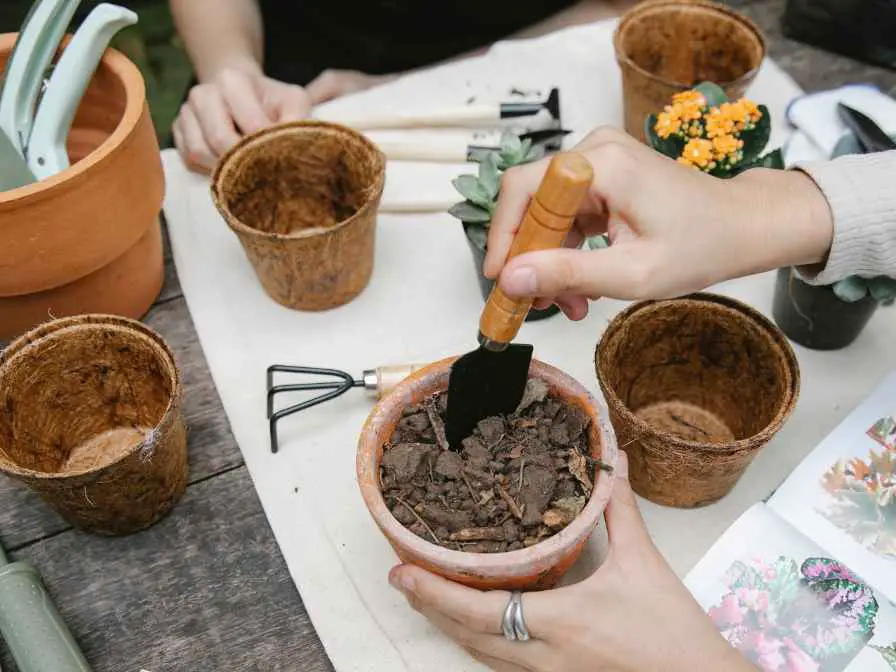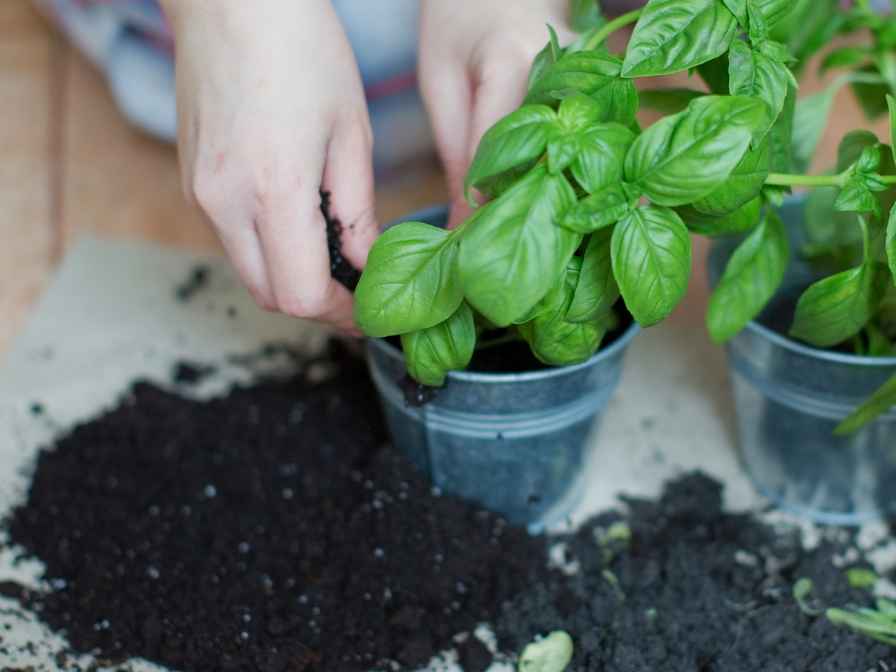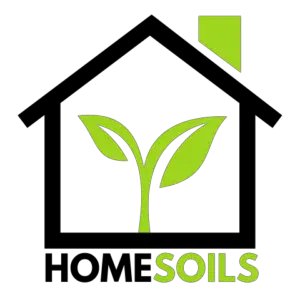You got the basic ingredients for making the potting soil. you mixed them with equal proportions and you used the soil. but before using or if you have got stored potting soil you need to sterilize the potting soil. We are going to make you learn how to sterilize potting soil.

Sterilizing Potting Soil
Sterilizing potting soil is a process that involves killing or removing any harmful organisms, such as bacteria, fungi, pests, and weed seeds, from the soil to create a clean and disease-free growing medium for plants.
This can be done through various methods, including heat treatment, chemical treatment, or a combination of both. Heat treatment is one of the most common methods used for sterilizing potting soil. It typically involves baking the soil in an oven or microwave at high temperatures to kill off any pathogens.
Chemical treatment involves using chemicals, such as hydrogen peroxide or bleach, to disinfect the soil and eliminate harmful organisms. Sterilizing potting soil is important to prevent the spread of diseases and pests to plants and ensure healthy growth.
Benefits of Sterilizing Potting Soil
There are many benefits of sterilizing potting soil. Here are some of these benefits:
Disease Prevention
Sterilizing potting soil helps to eliminate harmful pathogens, such as bacteria, fungi, and nematodes, that can cause plant diseases. By removing these pathogens from the soil, sterilization can significantly reduce the risk of plant infections and promote healthier plant growth.
This is particularly important for sensitive or disease-prone plants, as well as in situations where potting soil is being reused or recycled.
Pest Control
Sterilizing potting soil can also help to control pests, such as insect eggs, larvae, and weed seeds, that may be present in the soil. Heat treatment, in particular, can kill off pests and weed seeds, preventing their emergence and spread in the potting soil.
This can reduce the need for pesticides or herbicides, and help to create a clean and pest-free environment for plant growth.
Improved Plant Performance
Sterilized potting soil provides a clean and stable growing medium for plants, free from competing microorganisms or weed seeds. This can result in improved germination rates, better root development, and increased plant vigor.
Sterilization can be particularly beneficial for starting seeds or propagating cuttings, as it creates an optimal environment for young plants to establish and grow without the interference of pathogens or pests.
Reusability
Sterilizing potting soil can also allow for the reuse or recycling of soil, which can be cost-effective and environmentally friendly. By sterilizing used potting soil, it is possible to kill off any remaining pathogens or pests, making the soil safe to use for subsequent plantings.
This can help reduce the amount of potting soil that needs to be purchased or disposed of, and promote sustainable gardening practices.
Consistent Results
Using sterilized potting soil can help ensure consistent results in plant growth, as it provides a controlled and standardized growing medium. Sterilization removes potential variations in the soil, such as nutrient levels, pH, and microbial populations, which can affect plant performance.
This can be particularly important in situations where precise control over growing conditions is necessary, such as in a greenhouse or indoor gardening.
Methods of Sterilizing Potting Soil
There are many methods of sterilizing potting soil, some of the common methods are as follows:
Heat Treatment
Heat is one of the most common methods used for sterilizing potting soil. This can be done through various techniques, such as oven baking, microwave treatment, or steam sterilization. Steam sterilization involves exposing the soil to steam at a temperature of around 180-200°F for at least 30 minutes to an hour.
Oven baking typically involves placing the potting soil in an oven-safe container and baking it at a temperature of around 180-200°F for at least 30 minutes to an hour, depending on the volume of soil. Microwave treatment involves placing the soil in a microwave-safe container and heating it on high power for several minutes until the desired temperature is reached.
Chemical Treatment
Chemicals can also be used to sterilize potting soil. This can involve using disinfectants, such as hydrogen peroxide or bleach, to kill off pathogens and pests. For example, hydrogen peroxide can be mixed with water in a 1:1 ratio and applied to the potting soil to disinfect it. Bleach can be mixed with water in a 1:10 ratio and used as a soil drench or spray.
It’s important to follow the instructions and safety precautions of the chosen chemical, as they can be harmful to humans, pets, and plants if not used properly.
Solarization
Solarization is a natural method of sterilizing potting soil using heat from the sun. It involves covering the moist potting soil with a clear plastic tarp or sheet and leaving it in direct sunlight for several weeks, typically during the hot summer months.
The heat generated under the plastic tarp can raise the temperature of the soil to levels that are lethal to many pathogens and pests, effectively sterilizing the soil. Solarization is most effective in regions with high sunlight intensity and temperatures.
Freezing
Freezing is another method that can be used for sterilizing potting soil, although it may not be as effective as heat treatment. It involves placing the potting soil in sealed bags or containers and freezing it at temperatures below 32 F for at least 72 hours.
Freezing can help kill off some pathogens and pests, but it may not be as thorough or consistent as heat treatment.
It’s important to note that while these methods can help sterilize potting soil. They may also affect the availability of nutrients and the structure of the soil. Therefore, it’s important to carefully monitor and amend the soil as needed after sterilization to ensure optimal plant growth.
Additionally, proper hygiene and sanitation practices, such as using clean tools and containers, can also help prevent the introduction of pathogens and pests into potting soil.
How to Sterilize Potting Soil

Here we are going to tell you about the most common method of sterilization. You can use other methods as well. These are quite simple to adopt. Here’s a step-by-step guide on how to sterilize potting mix using the oven-baking method:
Materials required:
– Potting mix
– Oven-safe container or baking sheet
– Oven
– Oven thermometer (optional)
– Aluminum foil (optional)
Preheat Your Oven
Preheat your oven to 180-200°F. Use an oven thermometer to monitor the temperature and ensure that it reaches the desired range.
Prepare the Potting Mix
Place the potting mix in an oven-safe container or spread it out on a baking sheet. Avoid overcrowding the container or baking sheet, as this can prevent the soil from heating evenly.
Optional Step
Cover with aluminum foil (optional): If desired, you can cover the container or baking sheet with aluminum foil to help retain moisture and create a steamier environment for better sterilization. Poke a few holes in the foil to allow steam to escape and prevent excessive moisture buildup.
Place the Potting Soil in the Oven
Place the container or baking sheet with the potting mix in the preheated oven. Make sure the oven temperature remains at 180-200°F (82-93°C) throughout the sterilization process.
Bake for 30-60 minutes
Bake the potting mix in the oven for 30-60 minutes, depending on the volume of soil and the desired level of sterilization. A longer baking time may be needed for larger volumes of soil or for more thorough sterilization.
Monitor the Temperature
Use an oven thermometer to periodically monitor the temperature of the potting mix during the sterilization process, ensuring that it stays within the desired temperature range.
Cool and store
Once the sterilization process is complete, carefully remove the container or baking sheet from the oven and allow the potting mix to cool completely before using or storing it in a clean, airtight container.
Optional
Add nutrients and amendments: After sterilization, the potting mix may have lost some of its nutrient content. Consider adding fertilizers, compost, or other organic amendments to replenish the nutrients and improve the fertility of the soil.
Use sterile tools and containers: To prevent reintroducing pathogens or pests into the sterilized potting mix, always use clean and sterile tools, containers, and equipment when handling and planting in the soil.
It’s important to note that sterilizing potting mix may not be necessary for all situations, and it can affect the natural microbiome of the soil. Therefore, consider sterilization as a tool for specific situations. Such as when reusing potting mix or when dealing with disease-prone plants, and always practice good hygiene and sanitation measures in your gardening practices.
FAQs
Does potting soil need to be sterilized?
Sterilization removes harmful bacteria, fungi, insects, larvae, and other items present in the soil that can harm plants. It’s quite an important step.
Can you sterilize and reuse the potting soil?
Yes, surely you can. If you are reusing the potting soil it is good to sterilize it. It will make sure that harmful bacteria and other items are removed.
How do I know if my potting soil is bad?
If the smell of rotten eggs starts coming from the potting soil, it is a sign that the potting soil has gone bad.

